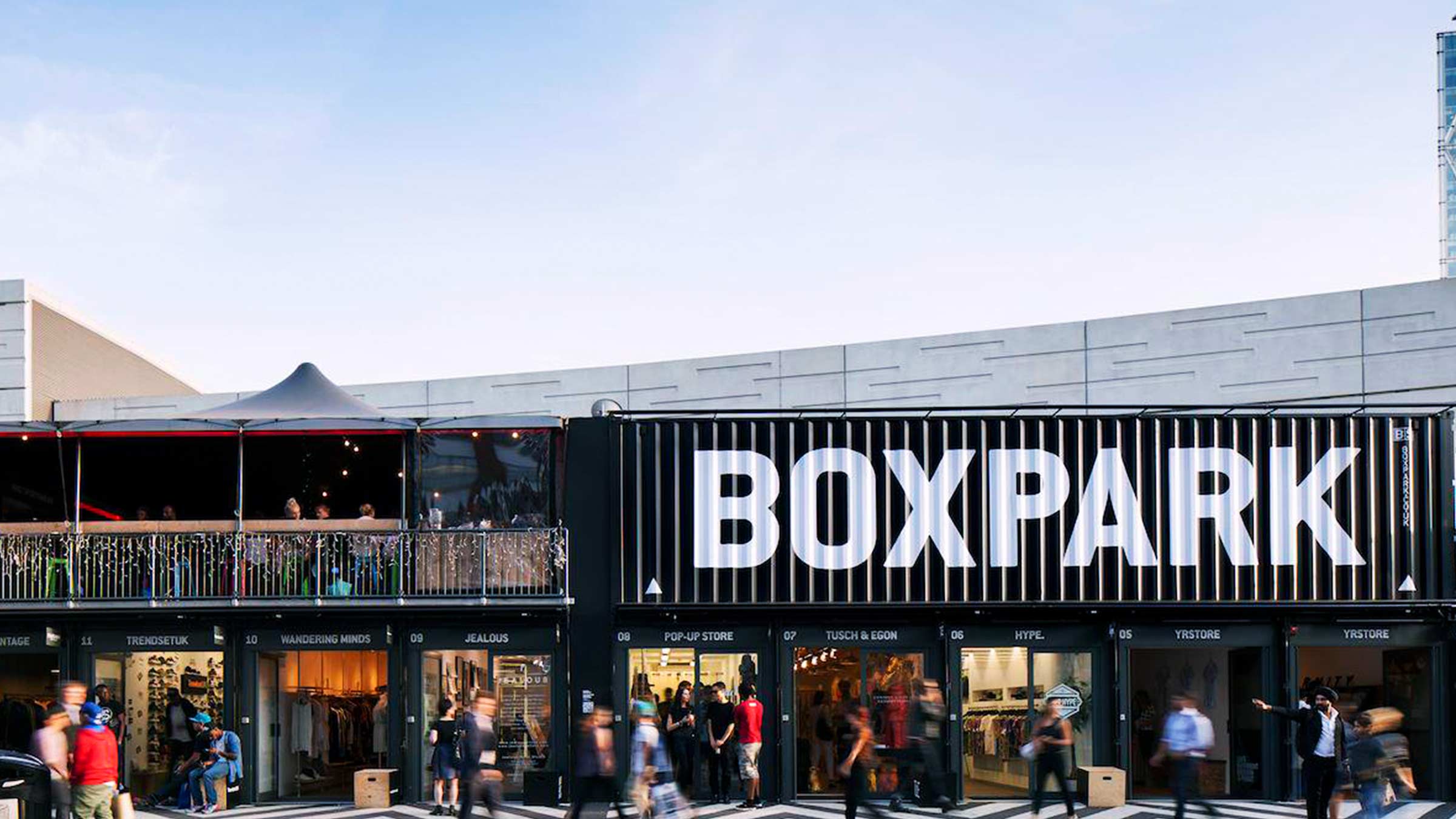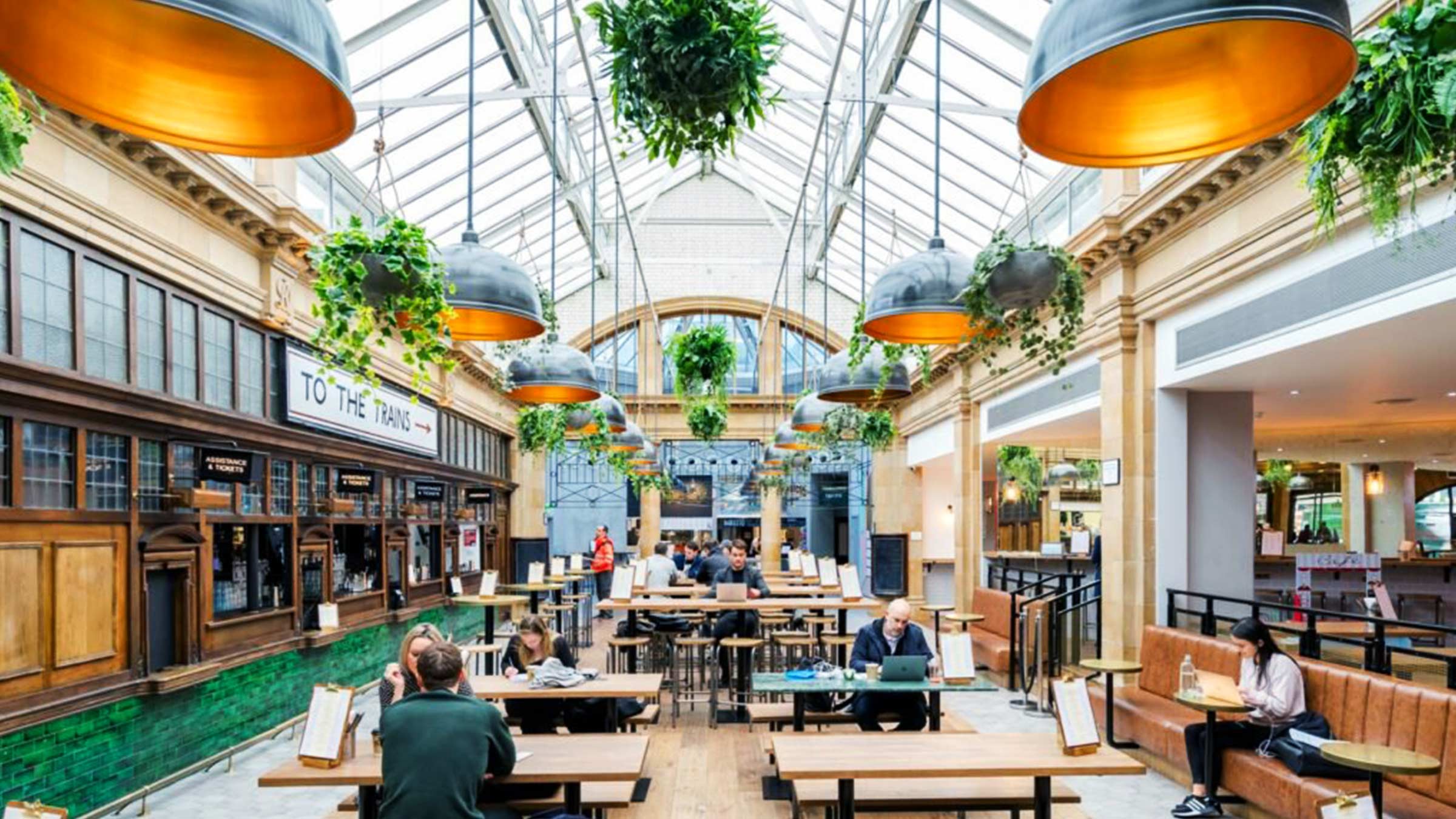The UK’s restaurant sector is undergoing a transformation and despite the sharp decline in middle-market venues, diners are still enjoying affordable meals out. As high street chains shut down at a rapid rate, customers are gravitating to newly emerging models of dining. One such model is the food hall.
Food halls are changing the face of UK dining culture. The model simultaneously caters to shifting consumer behaviour, provides a light-cost solution for restauranteurs and serves as an opportunity for inner-city regeneration. The concept – multiple small restaurants under one roof – borrows its features from street food culture and international modes of communal eating, encouraging diners to try new flavours, sit next to strangers and enjoy a meal in a casual environment.
In the last few years, food halls have been appearing across the UK and Europe. In Leeds, Trinity Kitchen sits above a shopping centre rotating five street food vans every six weeks. In Lisbon, Time Out Market has become one of the city’s most popular tourist attractions. In London, Italy’s renowned food hall Eataly will open in 2020, joining dozens of others that have launched in the last few years. Dinerama, Roof East, Pop Brixton, Mercato Metropolitano, Street Feast and KERB are just some of the venues transforming London’s dining scene. Traditional retailers are also moving into the food hall model, as seen at Harrods’ recently launched dining hall. The space – which used to sell fresh meat and fish – offers customers everything from pasta to sushi.

Food halls are beginning to change the way we eat out. Diners sit shoulder-to-shoulder with strangers, encouraging a level of social interaction that can sometimes be missing from the traditional dining scene. Consumers are spending less time worrying about where to book for a group of 12 and more time sampling dishes of exceptional quality.
This development on often uninspiring shopping centre food courts has given customers the freedom of choice. Food halls mitigate tricky decisions about where to eat out, serving as a solution to clashing tastes, appetites, allergies and intolerances in a time when dietary restrictions are becoming increasingly prevalent. The choice is in the hands of each individual diner.
“People want choice, they want a lot of it, they don’t want to pay too much for it – and they want it now.”
I caught up with Didier Souillat, CEO at Time Out Market, who clearly articulated the sense of urgency among consumers for change: “people want choice, they want a lot of it, they don’t want to pay too much for it – and they want it now,” he tells us. The Time Out Group have successfully catered to the market – by the end of this year there will be six Time Out Markets across Europe and the US, spanning 187,000 sq ft and offering food from 120 different chefs.
As opening a bricks and mortar venue becomes an increasingly risky venture, restaurant operators turning their sights towards food halls. The innovative model of dining provides owners with an easier and more affordable way to market a proposition to target customers.
“It’s the perfect storm,” says Didier, “the costs of brick and mortar operations are rising, rent prices are rising, the British pound is going down. For chefs and restaurateurs, it’s a big risk to go into a bricks and mortar from the beginning so food halls provide a low-risk entrance to the market.”
If you’re a startup or are looking to launch your concept in a new market, becoming part of a food hall is an attractive option. Within a food hall model, businesses benefit from external marketing budgets, low-risk short leases and a guarantee of footfall. Some food hall companies will fit out your kitchen, provide tables and chairs, dishwashing, security and cleaning staff in return for a cut of your profits.
Moreover, the emergence of tech in food halls allows for further increased efficiency. At Didier’s Time Out Markets, customers order at a vendor’s kiosk and electronic buzzers alert them to when their food is ready, negating the need for waiting staff. This not only keeps costs down but is indicative of the individuality that makes food halls so popular.
The perks of food halls for vendors go beyond affordability. The model provides a creative environment for established chefs and new traders alike, who can undergo market research and culinary experiment in a space filled with like-minded professionals. Restaurant operators are lured in further by the palpable social media appeal and the opportunity to convert online buzz into growth.
This movement is also encouraging landlords to re-examine their strategies and think of new ways to attract and retain tenants to their properties. Indeed, some experts believe this change in the market may even lead to Government intervention and the scrapping of certain practices such as upward-only rent reviews.
“It’s the perfect storm… the costs of brick and mortar operations are rising, rent prices are rising, the British pound is going down. For chefs and restaurateurs, it’s a big risk to go into a bricks and mortar so food halls provide a low-risk entrance to the market”
Once opened, it seems that food halls can do no wrong: they draw in tourists, bring new life to tired inner-city areas and drive footfall for other local business operators. But finding spaces big enough to house projects of this size – and those with the appropriate character, in the appropriate area – can be a challenge. As Didier explains: “We need to open in areas where people work, live and where tourists go. If any of those three characteristics are missing we won’t open.”
Crucially, the trend is receiving significant interest from investors. Earlier this year, the Market Halls group received a £20m private equity investment from Bridgepoint’s Growth Fund. The fund’s parent, Bridgepoint, has a very successful track record in the casual dining sector: it backs the Azzurri Group (which owns ASK and Zizzi) and recently exited Pret A Manger in 2018. Bridgepoint now sees food halls as a high growth sub-segment within the dining industry. Its recent investment in Market Halls will facilitate the launch of a new flagship venue on Oxford Street. Located in the old BHS store, the 37,000 sq ft dining hall will span across three floors and become the largest in the UK.
But where do we go from here and could this be an applicable model to other types of operator? There’s an opportunity for food halls to expand into new verticals and take on identities as community hubs, cultural centres and entertainment venues – providing much broader consumer services than purely restaurants.

The shipping container concept Boxpark is a prime example. Its Shoreditch site combines a food hall with a string of temporary stores, billed as the world’s first pop-up mall. The company has plans to launch new sites across the UK which incorporate not only food and retail, but co-working spaces, cinemas and leisure activities such as mini golf. This potential for growth is attractive for investors; this week it was reported that Boxpark has received numerous offers from private equity firms and property funds.
Food halls seem to draw simultaneously from the past and the present. In many ways, they represent the future of hospitality: driven by tech and social media, providing independence, variety and convenience to the consumer. But in a time when everything from eating to shopping can be achieved almost instantaneously from your smartphone in the comfort of your own home, food halls are an interesting throwback to a time when people used to come together to conveniently shop and eat in markets.









